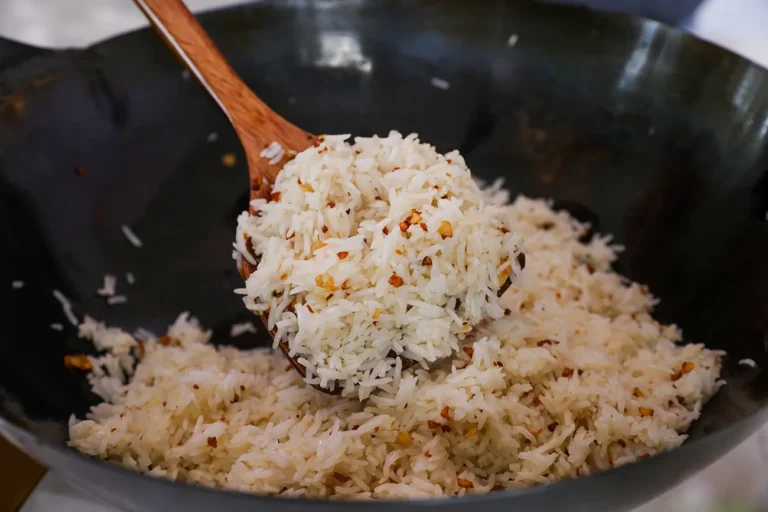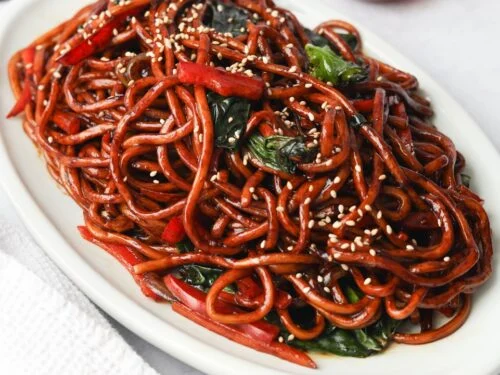Amber Menu’s Savory Pork BBQ Recipe for a Flavorful Feast
Food enthusiasts from all around the world hold a particular place in their hearts for Pork BBQ. Even non-Muslims and non-vegetarians cannot resist the deliciousness of these slow-cooked pork pieces. This meal has a unique place in Philippine culture in addition to being a delicacy.
Filipino pork barbecue has a distinct flavor that is sweet, flavorful, slightly spicy, and sets it apart from barbecue from other regions of the world. Pork chunks are used to make these meat kebabs. Although Filipino food often has a lot of BBQ, these bamboo skewers with pork meat inside are a party or gathering must-have. It is also a very widely offered meal, and practically every street corner has a cart or booth selling them with grills. They come with atchara and rice as well.
Realizing this, Ambers, a classic Pinoy restaurant chain, puts the dish on its menu. You can consume steamed white rice and the grilled meat with their own sauce. For this, they also offer combo packages.
Prices:
| Serving Size | Price |
|---|---|
| 5 Pcs: | ₱ 260.00 |
| 10 Pcs: | ₱ 520.00 |
| 25 Pcs: | ₱ 1300.00 |
Pork cut to use
Just as crucial as the marinade is the kind of pork we use for this recipe. Make an effort to obtain tender chunks of beef with a sufficient quantity of fat ribbons. These types of meat are best served from the butt and shoulder sections.
To ensure that the pork cooks evenly and is easily chewed, cut it into extremely thin pieces. Alternatively, you might ask the butcher to slice the meat for you. Mention that the meat is necessary for the pang-BBQ.
What is banana ketchup?
Because banana ketchup isn’t as well-known as tomato ketchup in many regions of the world, it may seem mysterious to most people. In actuality, it’s a sauce composed of a few components, including garlic, sugar, and bananas. In order to give it the appearance of tomato sauce even though there are no tomatoes in it, red food coloring is also added.
This distinctive ketchup, which is popular in Filipino and Filipino American homes, was inspired by American ketchup during colonization. Typically, this ketchup is eaten with eggs, rice, or as a marinade for barbecue dishes like this one. It tastes sweet, and when you eat it, the flavor of a banana comes through.
If you can’t find banana ketchup where you live, learn how to create it yourself.
Pork BBQ Recipe
The key components that are essential to the meat’s tenderness are soda and calamansi juice. Add these two ingredients to the marinade. These barbecued pork sticks taste sweet and smoky, and we may adjust the heat to our preferred level. To make it even more full, you can eat it with steamed rice.
This traditional meal is also offered by Amber, however it is prepared with special attention and a lengthy marinating period. Below is their trade secret recipe.
Ingredients
These are the ingredients to make the traditional Filipino pork barbecue. They use local ingredients for marinade and pork chunks.
Pork
- 2 kg pork, preferably kasim, thinly sliced
- ¼ cup cornstarch
- 2 egg whites
- 2 tbsp oil
Marinade
- ¾ cup soy sauce
- ¾ cup white vinegar
- ¾ cup banana ketchup
- ½ cup 7UP
- ¼ cup brown sugar
- 2 tsp black pepper
- 3 tsp garlic powder
Instructions for cooking
- Marinate the pork slices by combining them with oil, cornstarch, egg whites, and slices of pork. Make sure to completely mix the ingredients to infuse the meat with flavor. Take an hour off.
- An hour later, thoroughly combine soy sauce, white vinegar, banana ketchup, 7UP, brown sugar, black pepper, and garlic powder. Apply the marinade to the pork, place plastic wrap over the bowl, and let it sit in the refrigerator for the entire night.
- Pork: To prevent burning when cooking pork on a hot grill, soak bamboo skewers in water for approximately fifteen minutes.
- Take the marinated pork and skewer it in a single row, placing each piece in the center. Given the amount of pork in the ingredients section, we ought to have eighteen to twenty skewers.
- For basting, save the remaining marinade.
- Grill barbecue: Preheat the grill to medium-high heat. Then, add the pork skewers to the grill in batches. Of course, the size of the grill you’re using affects how many skewers you can make in a batch.
- Use the remaining marinade to bast the barbecue and cook it until it gets a little browned on both sides. Apply more marinade as needed by brushing.
- It should take five minutes to cook on each side. Once fully cooked, take off the grill and serve warm.
Nutrition Information
The approximate nutritional information for 100 grams of the dish is as follows. For user convenience, this page gives approximations of nutritional data. If accessible, the USDA Food Composition Database or other internet resources for nutrition computation are consulted for the data.
- Calories: 175kcal
- Carbohydrates: 19g
- Protein: 12g
- Fat: 5g
- Saturated Fat: 1g
- Cholesterol: 33mg
- Sodium: 912mg
- Potassium: 270mg
- Fiber: 1g
- Sugar: 17g
- Vitamin A: 50IU
- Vitamin C: 1.7mg
- Calcium: 32mg
- Iron: 1.1mg
How to serve and store
- Serve this Filipino-style barbecue with vinegar dipping sauce and hard drinks as an appetizer or snack.
- It can also be eaten as a main course, typically with rice or pancit and a side dish of atchara.
- You can freeze the seasoned beef for later use. Freeze the meat for up to three months in the freezer using an airtight container or sealable bag.
Conclusion
Filipino Pork Barbecue is a cultural experience as much as a cuisine made with barbecued meat. The soft pork and the flavors of sweetness, spice, and smoke come together to create a delightful and filling barbecue. This recipe gives you a taste of Filipino culture that you can make at home, and it was inspired by Amber Menu’s version of the traditional dish.
Filipino Pork Barbecue is guaranteed to please any crowd, whether it is served as a main dish with rice and Atchara or as an appetizer with vinegar dipping sauce. Now light up your grill, assemble your closest friends and family, and savor the tastes of the Philippines!







